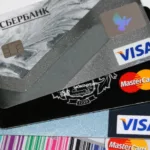It seems like there are so many ways to get into debt in today’s economy. If you want to buy a decent car, go to college, buy a home, or use a credit card to make purchases, you’ll potentially accrue debt, for years to come. The key is to manage your debt so that one day you can climb above it and get on the right side of your household balance sheet. The below six tips will help you to escape your financial manacles and keep them off for good.
1. Rethink Your Debt
If you have no choice but to take out a loan, you might be pleasantly surprised that there are numerous charitable lenders that offer fast small loans at a fraction of the cost of high-interest payday loans. These loans provide transparency, flexible repayment terms, and lower interest rates which help you to budget and reduce your debt quickly.
2. Budget Smart
With today’s technology, there is no excuse for forgetting to make a payment or miscalculating how much you can afford to spend in any given month. There is a large variety of finance and money saving apps you can use to make a budget, calculate expenses and schedule payments, to help you navigate through your monthly finances. Make sure that you’re including every expense, even minor ones and set aside a food and entertainment allowance for yourself each month so that you don’t go over each time you go out with friends or go for a bite after work.
3. Safety Net
One of the biggest reasons that individuals and families can’t seem to stay afloat financially is that they’re always dipping into their monthly budget to pay for the unexpected. This might be an illness, car troubles, or even temporary unemployment. To avoid getting caught up and missing payments on other loans or bills, keep an emergency savings account of at least one month’s Income and try to build it up to three or six months over time. You’ll thank yourself if you ever need to use it.
4. The Extra Mile
Repaying only the minimum is a sure fire way to keep yourself in permanent debt. Even an additional $20 per month will help you to reduce the principal on any loan more quickly and potentially save you thousands in the long run. While it’s tempting to say that $20 would be better working for you in an investment, the interest on most loans is probably far higher than the return on any investment, so you’ll inevitably end up with a net loss on that money. You’re infinitely better off focusing your energy and resources on eliminating your debt, and then refocusing on investments.
5. Balance Transfers
If you’re up to your neck in credit card debt, one of the most useful tools available to your is the balance transfer. Transfer your debt from a high-interest card to a new credit card offering 0% APR for the initial year or two. This, in effect, provides you with a temporary interest-free loan.
6. Moonlighting
This goes along with step number 4—money doesn’t come out of thin air, and if you want to put more money toward paying down debt, you may need to pick up another gig. Think about what skills you have that might be of values, or look into the many intriguing ways to earn money online.
If you follow these six steps, you’ll bring yourself closer to living a debt free life. If you’re disciplined, stick to your budget, save, and make smart financial decisions, you’ll find yourself in the green sooner than you might think.








